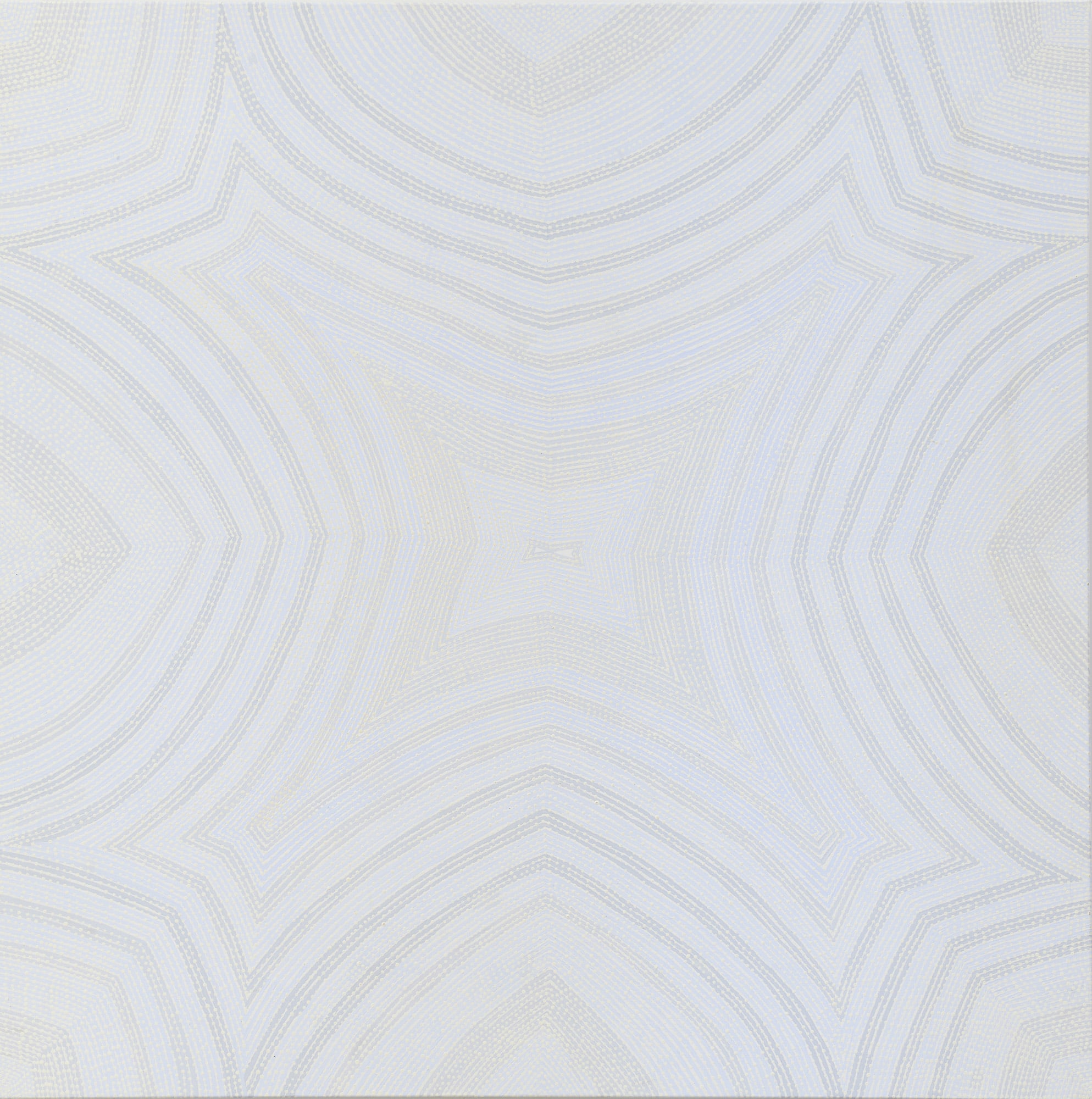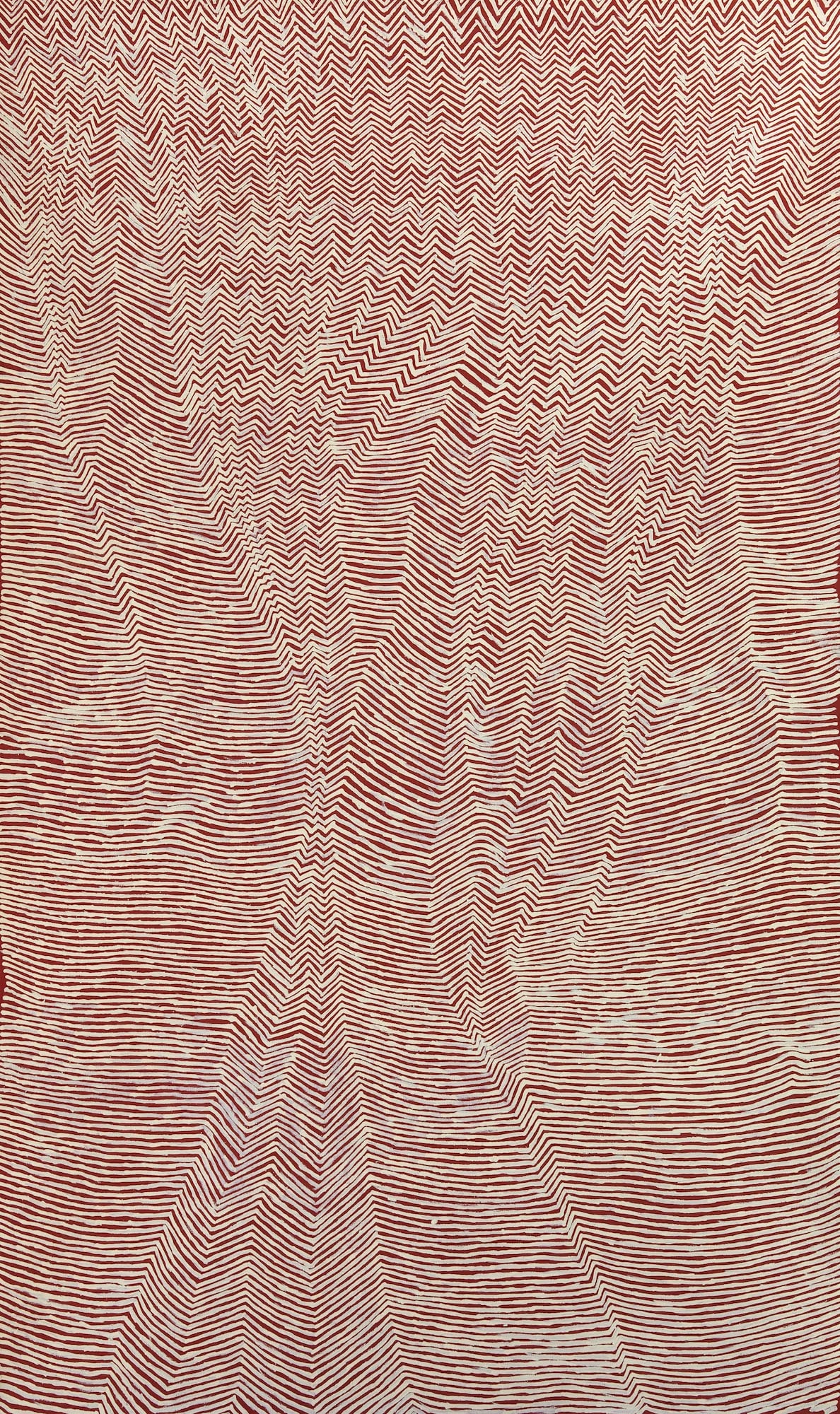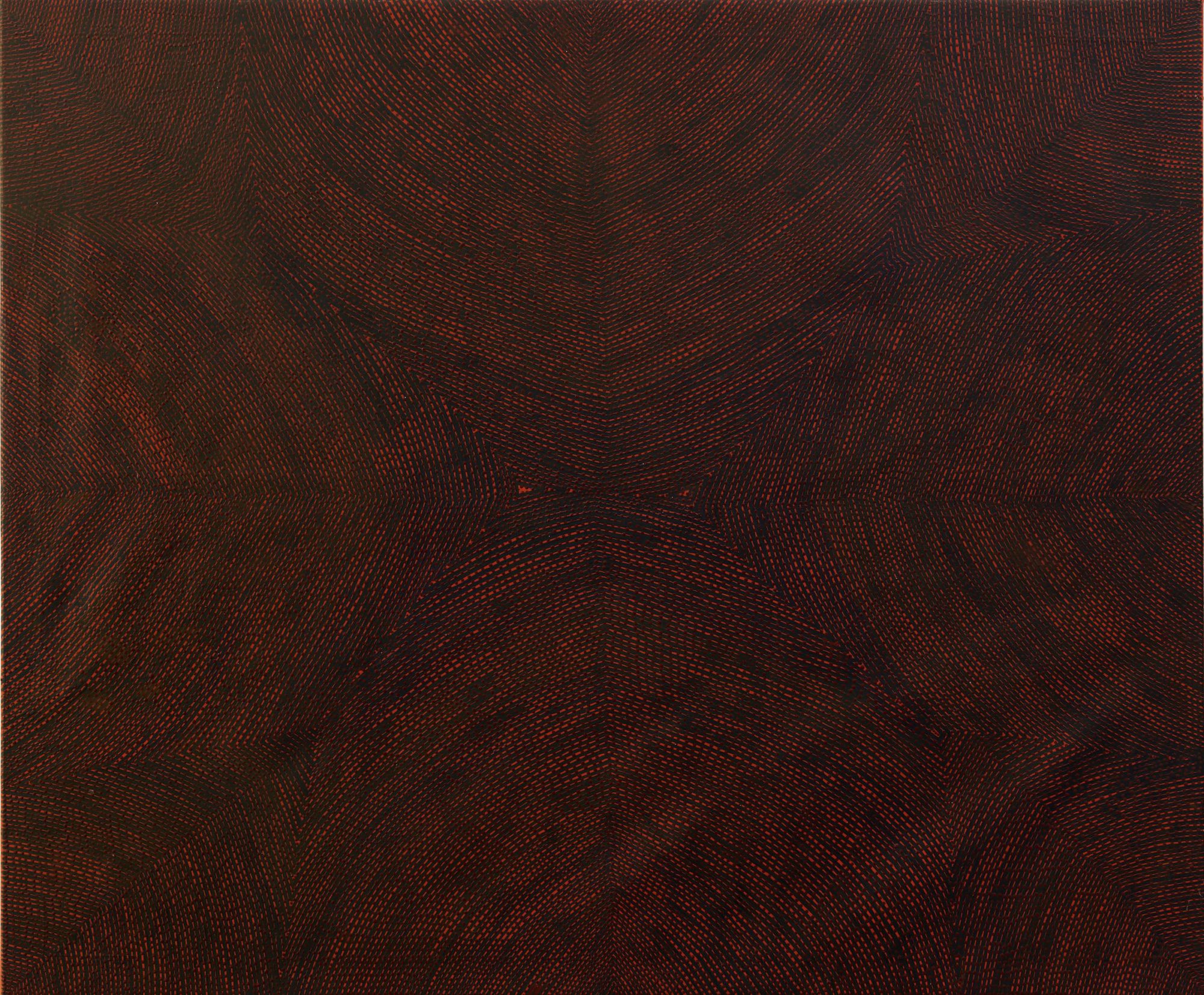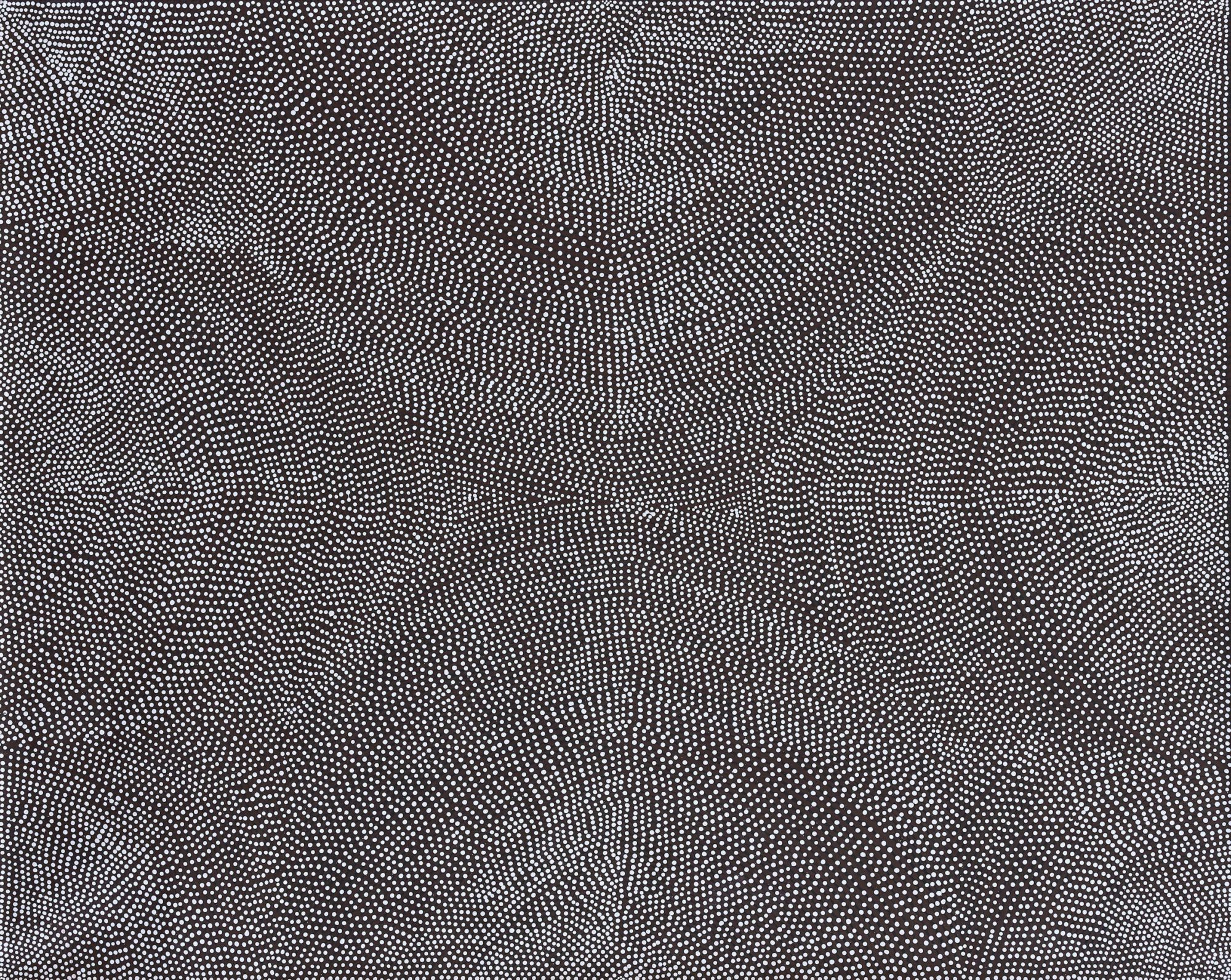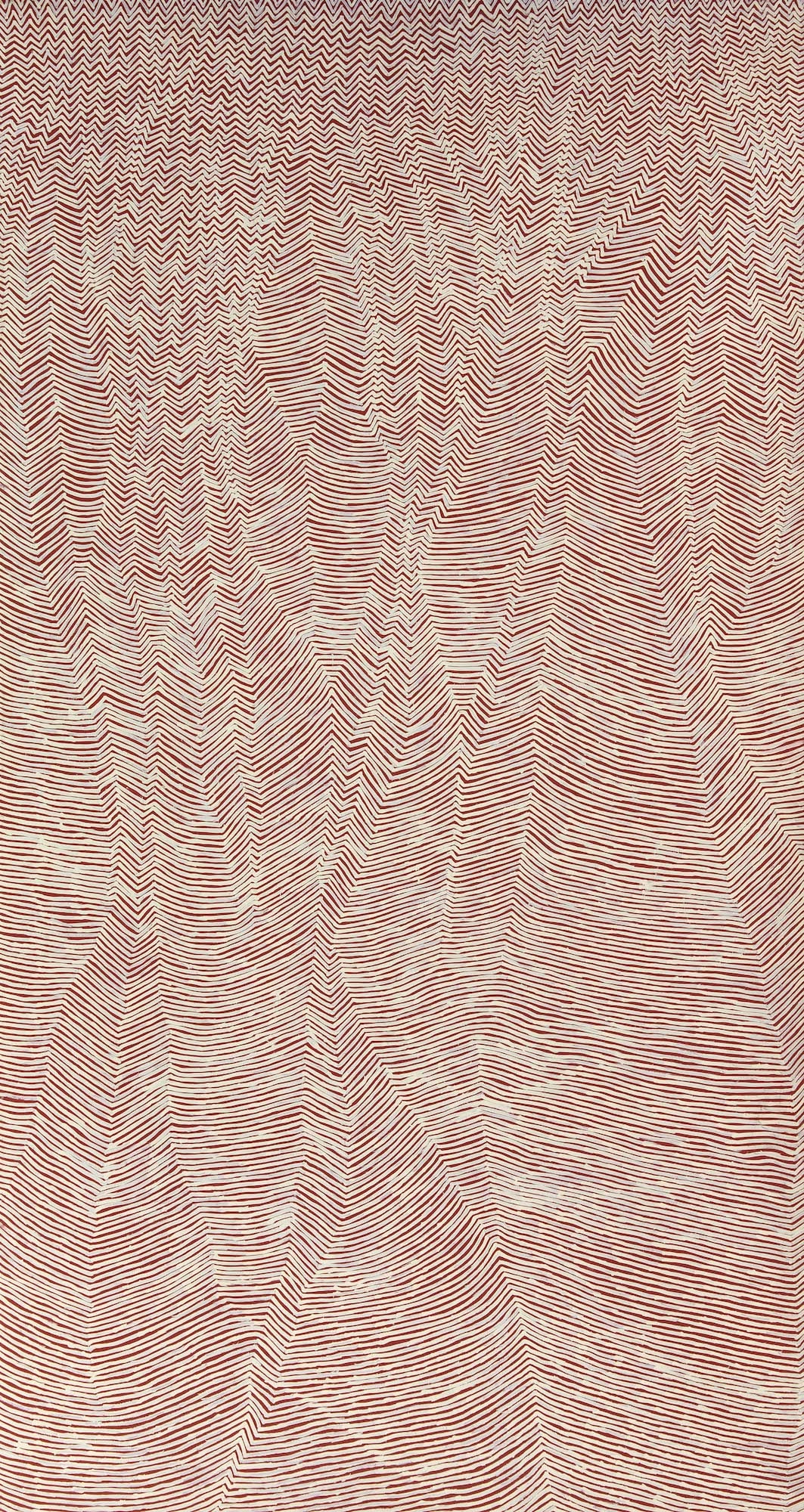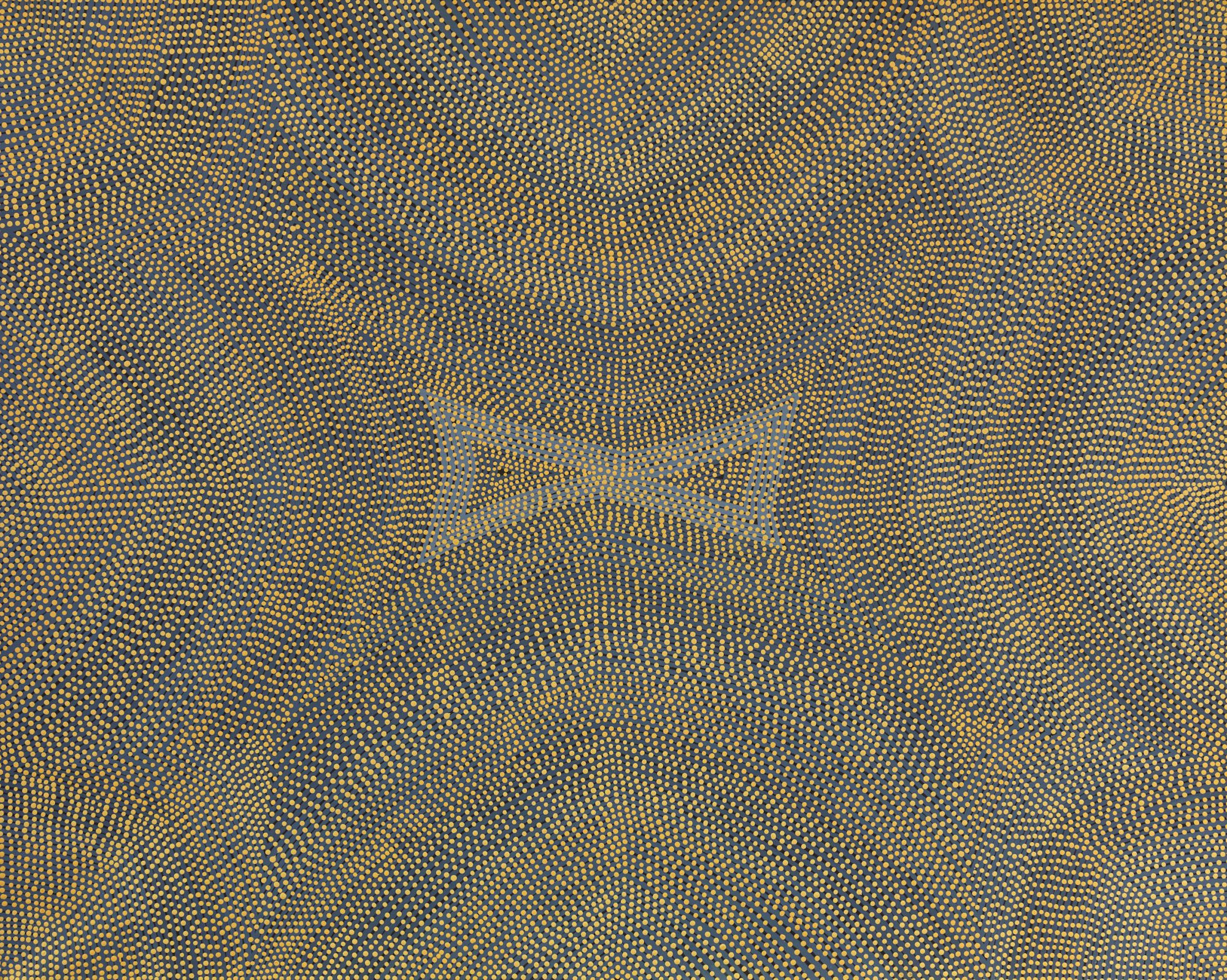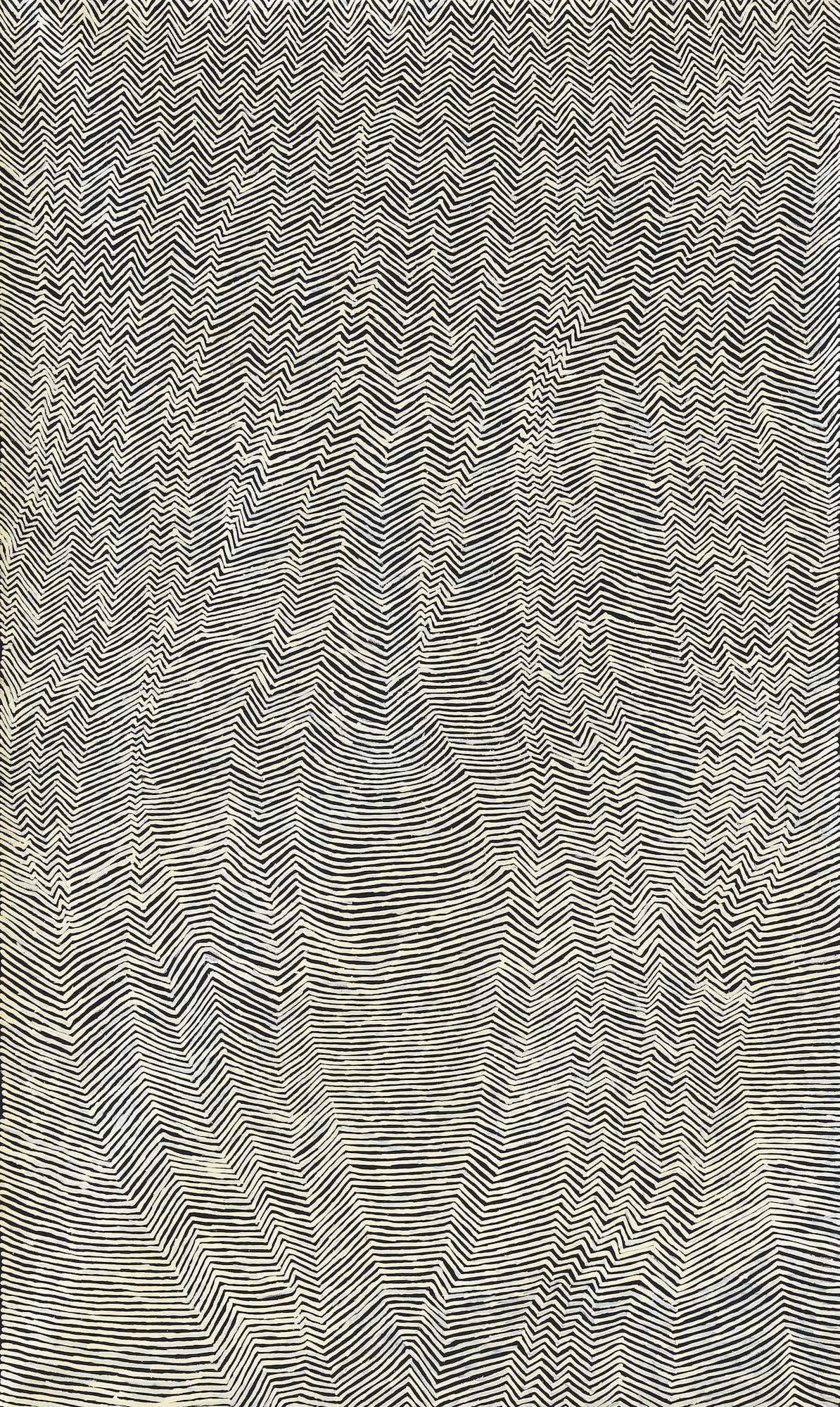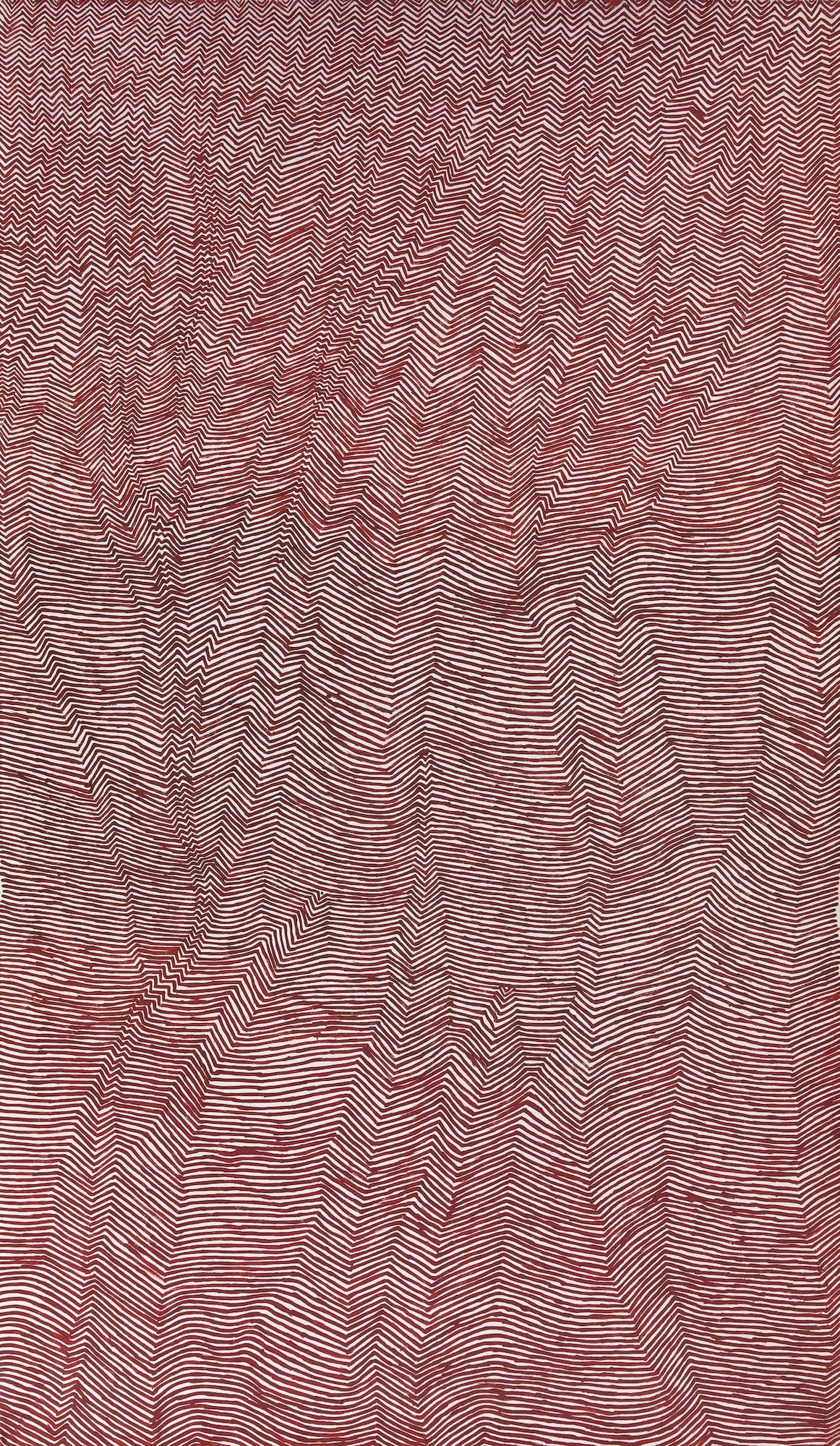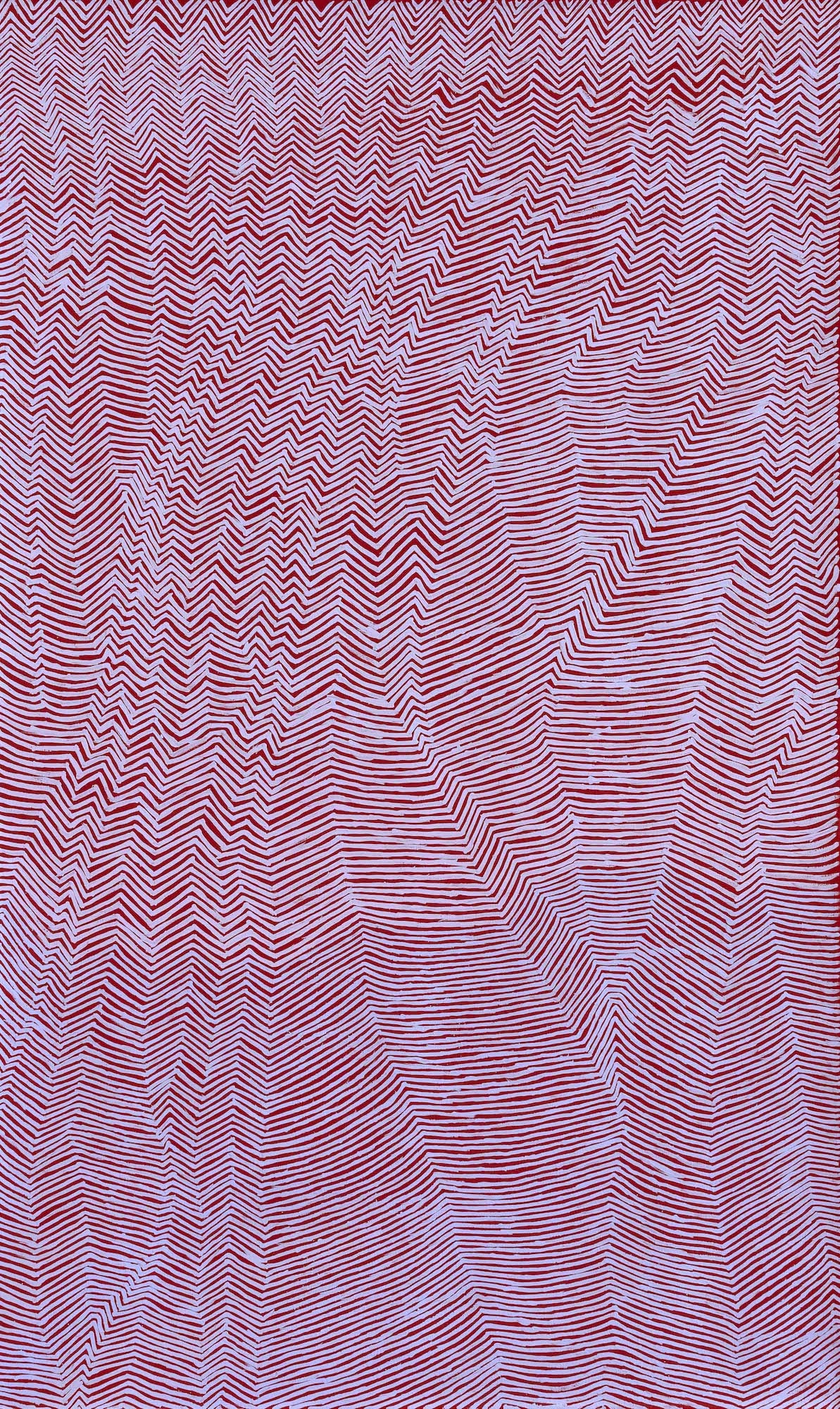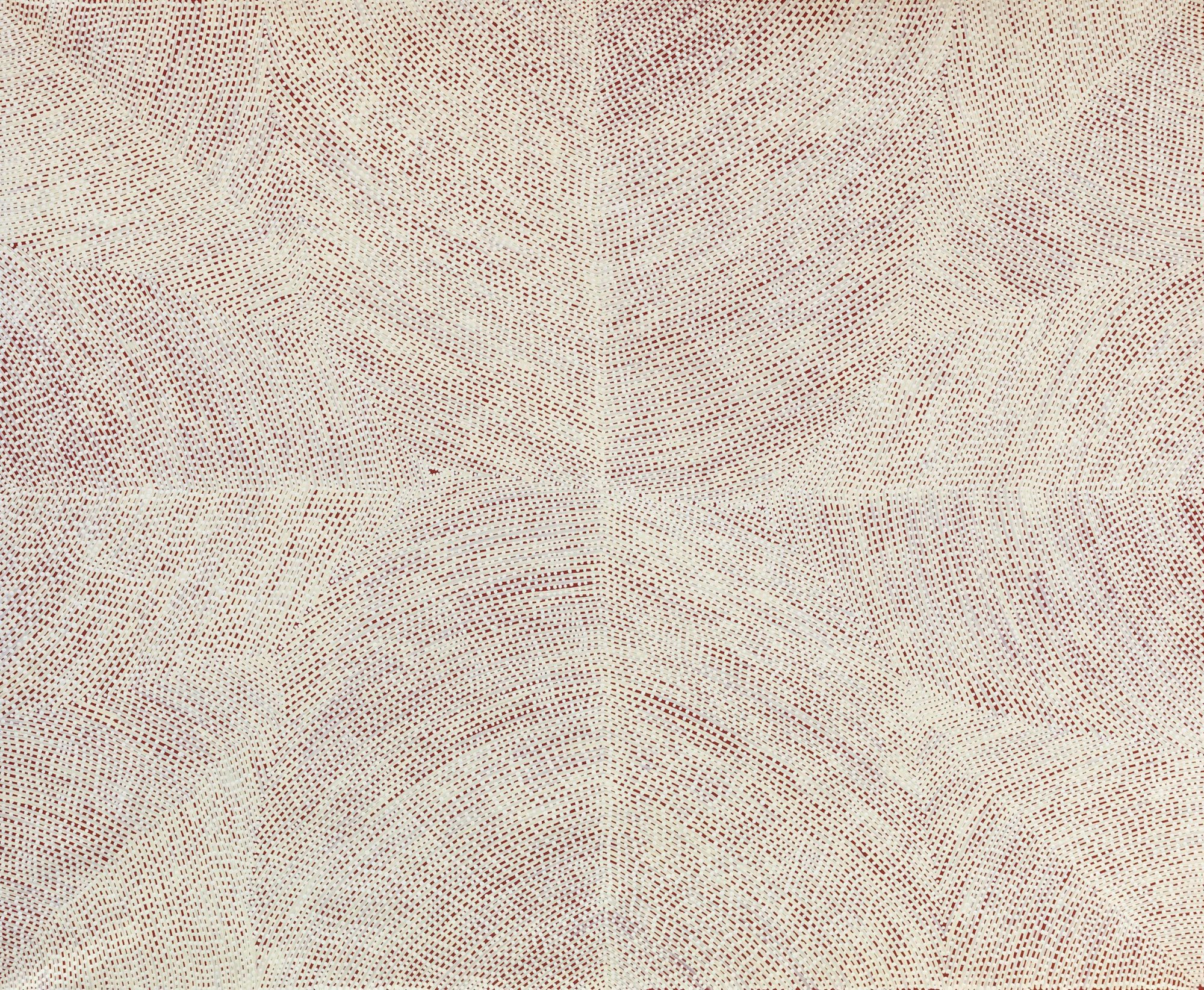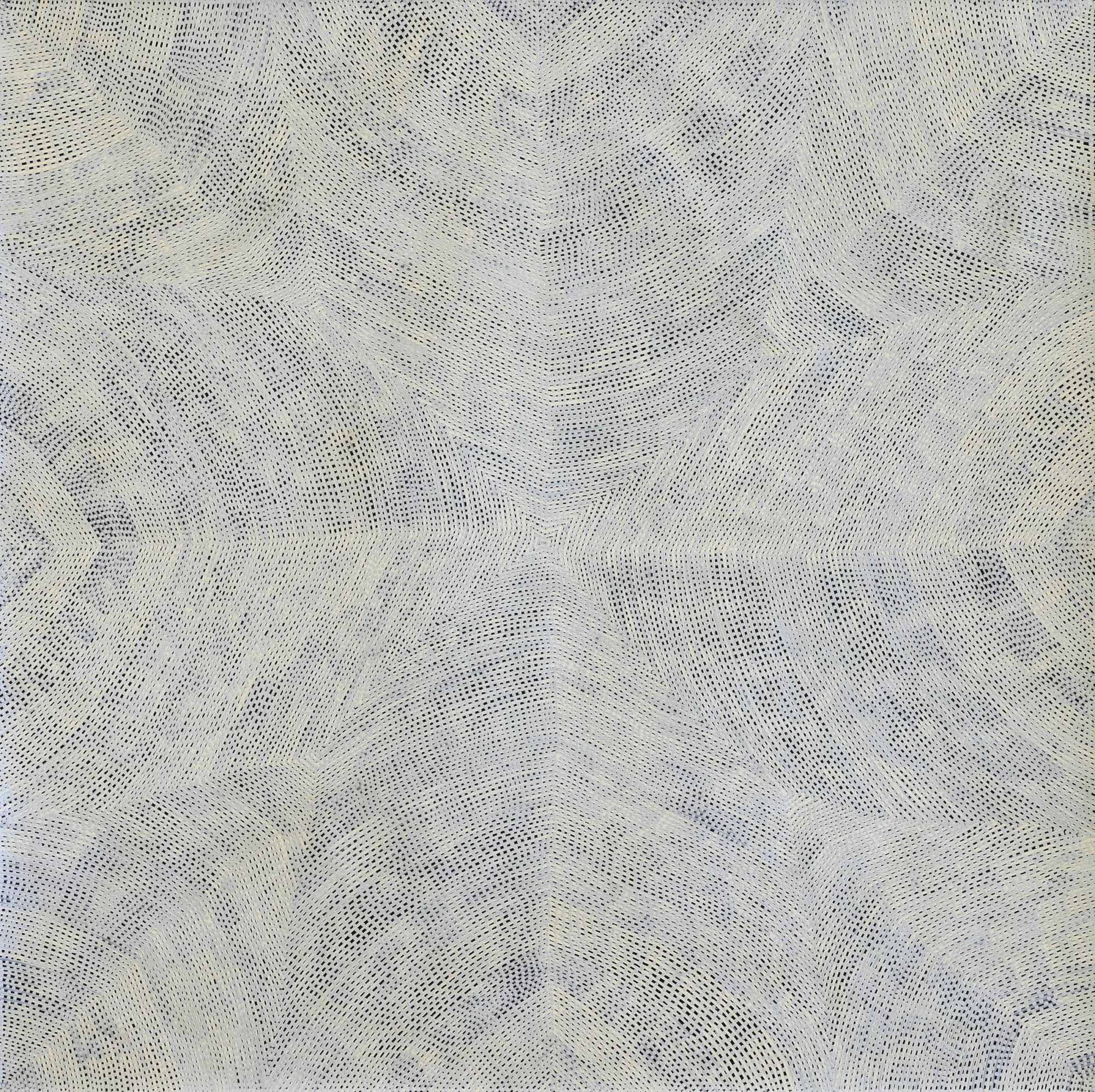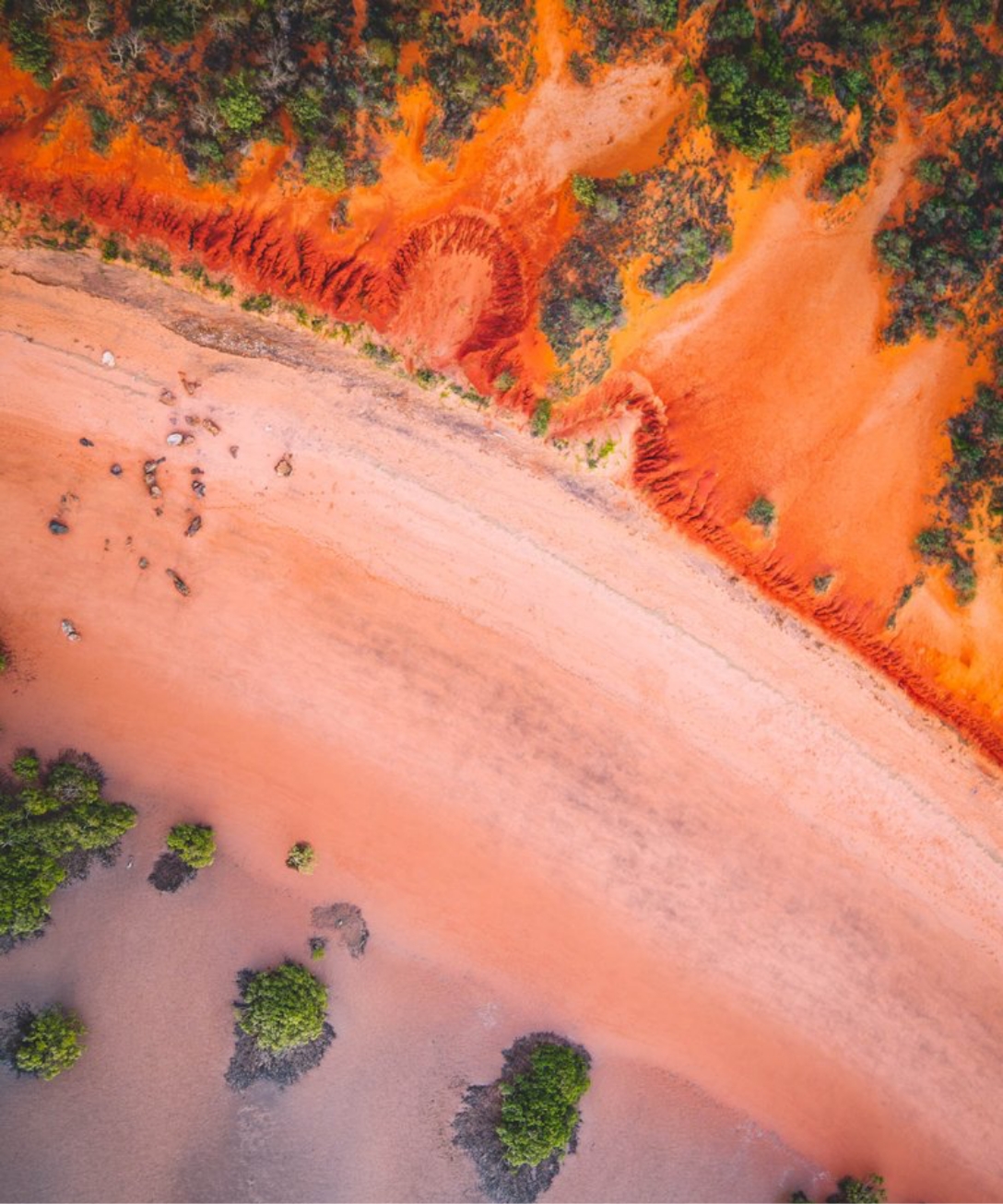
Exhibition Essay
CHARLOTTE PHILLIPUS NAPURRULA HAS A WAY WITH WORDS. EVEN THE ENGLISH SUBTITLES OF HER ARTIST INTERVIEW ON THE PAPUNYA TJUPI WEBSITE READ LIKE POETRY:
I’ve seen a lot of sandhills
When we sat with them – the elders –
we watched and learned.
We used to listen
when Father told the old stories.
Even Grandmother told us stories too.
I do paintings about talijarra (sandhills)
I used to do paintings like my Father –
old way, on boards.
From there, I saw how it is
and I thought: I’ll do sandhills.
They say a picture is worth a thousand words, but the title Napurrula came up with for this two woman show: Pinpanyi ngarrirra encapsulates in just two words much of what these paintings mean to their creators. Pinpanyi is one of several words in Pintupi-Luritja for the flashing of lightning – testimony to its importance as the harbinger of spectacular life-bringing storms that hydrate the parched earth. Ngarrirra conveys the absorption by the land of this transformative ancestral power. What words cannot convey to city dwellers is the grandeur and ferocious might of lightning strikes in the heat and dryness of the desert. Or the exaltation experienced by desert dwellers at the rejuvenation of their beloved country in the aftermath of these storms. It was with just such exuberant emotions after the first good rains all year had fallen on Papunya that Napurrula and Maureen Poulson Napangati settled down in November 2020 to finish painting this long-planned exhibition.
Like poetry and the paintings themselves, Pinpanyi ngarrirra’s meaning is multi-layered. When I interviewed Napurrula in Papunya before writing this essay, she gave me another – equally poetic – explanation. It was, she said, in memory of Kumantjayi Nangala, a very senior and universally esteemed Papunya law woman and painter who passed away almost exactly a year ago. The expression “Pinpanyi ngarrirra” was something Nangala used to say to the young girls to whom she taught dancing as part of Papunya School’s culture programme in the 1980s. The song is flashing in the ground as the old women dance, Nangala would say. She would talk about the story and say that it will be there forever, that it was alive, moving in the sandhills where you see the willy winds coming up and the lightning flashing.
Napurrula would have observed those dancing lessons when she joined the staff of the Literature Production Centre at Papunya School in her late twenties. For a decade she worked at the Centre, helping to transcribe audio tapes of the old storytellers and turn them into the first ever written texts in Pintupi-Luritja. She herself authored over forty illustrated books and translated others’ Pintupi-Luritja prose into English. After the Centre folded, she taught in the Papunya Preschool, completing a Dip Ed in 1999. She feels keenly the abandonment of the bilingual education programme that the Centre supplied with teaching materials and now chairs a committee dedicated to preserving these historic materials and restoring them to circulation.
But these days painting is Napurrula’s primary occupation. As she says in I’ve seen a lot of sandhills, she was mentored by her late father Kumuntjayi Long Tjakamarra, one of the first and the last surviving member of the founding group of Papunya Tula masters. In so many ways, she is her father’s daughter: well-educated, moving easily between Aboriginal and European contexts, devout Christian, senior law woman and community leader. Her talijarra (sandhill) works share the majestic simplicity of Tjakamarra’s mature style. Napurrula has vibrant memories of her childhood in the sandhill country: of the wind that takes away the sharp points and blows them flat where it’s easy to walk and people would go hunting for goanna and wildcat. They would climb up those sharp ridges “just for fun”, looking around and then walking down with giant steps. She remembers those things while painting these works.
As Napurrula and I sat talking in front of her final canvas for this exhibition, Papunya Tjupi’s manager Emma Collard unrolled alongside it the last completed canvas by her co-exhibitor Maureen Poulson Napangati. “Kapi (water) and sand” Napurrula remarked looking from one to the other, and truly the juxtaposition brought their different subject matters into sharp relief. Napurrula’s perfectly captured the look of sandhill country I had seen from the plane flying towards Alice Springs. Napangati’s work, on the other hand, gave off the flashing of lightning heralding the great ancestral storm at Kalipinypa that she always paints and the shimmer of light sparkling on the water in its wake. As Napurrula put it: “kapi pinpapinpanyi (kapi and lightning together). When you see the lightning flashing we always say ‘kapi pinpapinpanyi, it’s going to be big rain’.”
Located in the sandhill country north-west of Papunya, Kalipinypa is the westernmost point of a chain of Water Dreaming sites, conceived as the movement of the storm ancestors out from Kalipinypa leaving water sources where they stopped along their journey east. Napangati inherited her right to paint this important site through her mother Pilyari Napurrula and Pilyari’s ‘big brother’ Johnny Warangkula Tjupurrula. Pilyari was a strong leader in women’s ceremonies for the Papunya community and regularly taught the young girls dancing alongside Nangala. In the 1980s she authored two books through the Papunya Literature Production Centre. Mamulama Ngalyananyi recounts a childhood undisturbed by Europeans and her family’s reactions when “eventually they came to Ilypili, to us naked mob”. Nyaangku tjananya wakanangi? describes mysterious events that influenced her parents’ decision to come east and never return to Ilypili where their families had always lived. Napangati’s capacity for deep concentration while executing her mesmerising depictions of Kalipinypa makes sense in the daughter of a consummate storyteller with vivid recall of pre-contact life: painting is Napangati’s way of reconnecting with these places and her mother’s memories.
Fifteen years after the establishment of an artist owned and directed art centre at Papunya, every artist’s painting in the bustling Papunya Tjupi studio is radically different from everyone else’s. But in a way each artist is still painting the same picture over and over. Not exactly the same of course: each canvas in this exhibition by Napurrula or by Napangati is subtly different as each artist continues to extend the possibilities of their signature style. But the end product is the result of the artist going through the same steps in their individual creative process. In Napurrula’s case, this involves starting at the top of the canvas with the zigzag line that represents the land-forming lightning and gradually, meditatively, working her way down the painting, allowing the variations of her brush to show how the sandhills emerge from the lightning – and more recently how the wind shapes the dunes into forms she remembers from childhood. In Napangati’s case, the process begins with the placement of small triangles signifying the lightning of the Kalipinypa story towards the centre of each side of the canvas. There is something uncanny about the spatial awareness that enables Napangati to create from this starting point a seamless network of lines meeting in a central cross. Between the lines she then inserts dots, one of the last of Papunya Tjupi’s artists to adhere to this fundamental component of the original Papunya style, seeing in her mind’s eye “hail stones all falling down together”.
And lightning –
It’s still there.
Winpa (lightning)
It brings the patterns so people can see.
(CPN) © Vivien Johnson 2021.





